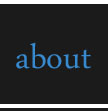










Since its invention, photography has been traditionally thought of as a way to accurately capture and record images of reality – actual space and time. Our automatic response to any event, no matter how small, is to take our camera in order to record our experiences and serve as memories. A glance at any print medium that contains photography (newspapers, magazines, books, museum catalogs, etc) will yield images that show the viewer events or objects as they existed in real life. My photography, however, delves into abstraction, arrived at by process. I want to push viewers to ask “what is that and how is it made?” rather than seeing a recognizable image and automatically knowing that it was made with a camera. Unlike abstraction in other mediums where the artist has the option of creating something that is completely invented and divorced from reality, the use of photography in creating an abstraction requires a real source even if that source is ultimately broken down into purely formal elements. Like traditional photography, I point my camera at the world, but the choices I make during the photographic process allow me to challenge preconceived limitations of photography by creating images that are removed from the recognizable and known. I began abstracting my photographs in an effort to move beyond limits: beyond both the recognizable image and away from the rigid, formal composition that that sort of imagery imposed. In my work, the combination of high contrast and blurred, ethereal lines of light create an abstract photograph.
It is through process of taking the photograph and processing the film that I transform reality into an abstraction. Each decision I make about my work contributes to the final abstract photograph. The choice of film results in the presence of grain in the final print, which allows the viewer to recognize that the final product is a photographic image. This is important because the viewer is able to recognize that the work is pushing the boundaries of photography through the abstraction of reality. When shooting, I make the choice to work only at night and focus on a single type of subject matter: light. The juxtaposition of the lights in the dark night creates high contrast images that lacks in detail. While shooting, each frame involves a sweeping motion of the camera during a long exposure. These choices are key to my abstraction: by moving the camera back and forth or up and down while shooting at night, the resulting image is a dynamic, streaking image of light that has very few, if any, details that ground it in reality.
This choice results in “happy accidents,” which I edit into my final images. When choosing images from film to develop into final prints, I look for images that lack details that can be recognized as reality and have a certain energy and an almost other worldly quality to them. The words of abstract photographer Victor Gianella accurately describe my decision making in this final image selection: “the heart has reasons that reason does not understand.” I don’t need to put a lot of thought into selecting images; it’s more of a feeling I experience when viewing them that I know they will be important as a final work. I hope that the viewer will also experience the same feeling of intrigue and wonder when seeing my work. I prefer these edited “happy accidents” over more constructed images of light painting, like in the work of the German photography group Lichtfaktor. Although their process is more controlled, I find inspiration in the way that they paint with light in the context of an identifiable landscape. Currently, the purpose of abstracting is, for me, my own way of pushing into a new direction of photography. I feel like using photography as a recording device isn’t where I sit creativelyand that with photography and photo editing tools so available to the general public that I have to push my own creativity. I want to create images that force people to think something beyond generalities about photography: my work is more than a simple snapshot of a friend or a picture of a sunset. My work transforms unexciting moments in time into art objects that are free to have their own meaning imposed onto them.